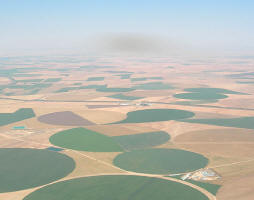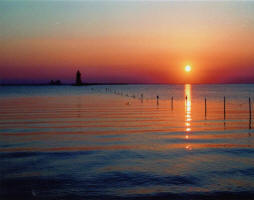 Red Sea-Dead Sea Project: Too Little, Too Late?
Red Sea-Dead Sea Project: Too Little, Too Late?
The $950 million Red Sea-Dead Sea conveyance project has finally been given the go-ahead. While it will likely save Jordan money and provide it with much-needed fresh water, doubts remain about whether it can save the fast-shrinking Dead Sea over the long-term.
By Jane Hosking
For thousands of years the Dead Sea has been a defining environmental feature of the Middle East, attracting visitors from across the world. But in recent years the unique natural wonder has been shrinking at an alarming rate—dropping by over twenty-five meters in less than fifty years, and now at a rate of over one meter per year. If no action is taken soon, experts believe that the Dead Sea could have only four decades left before it becomes nothing more than a pile of salt.
But now, after years on the drawing board, a multi-million-dollar project, primarily designed to save the Dead Sea from extinction, has finally been allowed to proceed by Jordan, Israel, and Palestine.
The Red Sea-Dead Sea project will involve building a desalination plant in Aqaba to provide fresh water to the three parties for agriculture and drinking purposes. Brine water, a byproduct of this process, will then be pumped north via a pipeline to replenish the Dead Sea.
This is the first time Jordan, Israel, and Palestine have come together to collaborate on a trilateral project since the Oslo Peace Treaty in 1995. Unsurprisingly, political and environmental controversy has surrounded the deal, along with concerns that the initial project—proposed in 2005 at a cost of $11 billion—was not economically feasible.
The project has since been scaled down significantly from the version originally envisioned, but the parties involved have agreed to implement the first of five potential phases at a cost of approximately $950 million.
Phase one of the project, which will be constructed on a build-operate-transfer basis, will soon be tendered out. The aim is to commence construction in 2017, and to have the project completed by 2019.
The water intake infrastructure will be located in the northern part of the Gulf of Aqaba, inside Jordan, and the desalination plant will be constructed just north of Aqaba airport. A hydro electricity plant will also be part of the deal, generating 20 percent of the needed power for the project.
The desalination plant is expected to produce 120 to 130 million cubic meters of brine to be pumped into the Dead Sea, along with 85 million cubic meters of fresh water per year. Of this fresh water, up to 50 million cubic meters will be sold to Israel and the rest—around 35 million cubic meters—will go to Aqaba city.
In return, Israel will sell 50 million cubic meters of water to Jordan from Lake Tiberias in the north, for around $40 cents per cubic meter—cheaper than the expected $1 per cubic meter that they will be paying Jordan for the desalinated water.
“This water will be supplied to Jordan’s northern governorates which are suffering from water shortages because they have very limited water sources, especially due to the Syrian refugee influx,” said Saad Abu Hammour, Jordan’s Secretary General of the Ministry of Water and Irrigation.
Palestinians are also set to benefit from the deal, receiving 20-30 million cubic meters per year, not from the desalination plant, but from Israel’s existing water sources.
“This is the condition of the Israelis getting water from the project,” said Abu Hammour, adding that it would have been too expensive at this stage to construct a pipeline from the desalination plant to the West Bank, but it was considered important that Palestinians benefited from the deal as well.
For Jordan, the project is expected to save the country at least $2.1 billion per year, while each water unit will be 25 percent cheaper than the Disi water project, according to Abu Hammour.
In order to fund the project, the Jordanian government hopes to receive $350 million in grants from international donors, which will be allocated to the construction of the brine pipeline to help save the Dead Sea. The remaining $600 million will be sought from investors for the desalination plant.
Yet despite all this progress, the future of the Dead Sea still looks bleak, and as a result, the environmental and economic consequences for Jordan could be huge.
Why So Low?
While evaporation is the main factor causing the depletion of the Dead Sea, this has only become a major problem since the disruption of the Jordan River and its tributaries, which previously fed the sea with up to 2 billion cubic meters of water per year. Today, the Dead Sea receives only around 200 to 300 million cubic meters, and according to the project website, 80 percent of the Dead Sea’s decline has occurred within the last 30 years.
“If I wanted to blame anyone I would blame Israel first, Syria second, and Jordan third,” said Abu Hammour,referring to the countries primarily responsible for diverting water from the Jordan River since the 1950s.
But another less well-know contributor to the Dead Sea’s depletion are the large chemical industries in Israel and Jordan—namely the Dead Sea Works Company and the Arab Potash Company—at the southern end of the expanse of water, which use its water to extract minerals for fertilizers.
“The industries in the south right now are responsible for at least 25 to 30 percent of the problems of the Dead Sea,” said Munqeth Mehyar, president and director of Eco Peace Middle East, formally Friends of the Earth.
According to Abu Hammour, these companies are extracting around 600 million cubic meters of water from the Dead Sea per year. But he said that some of this water is returned to the sea after the minerals are extracted.
If nothing is done to replenish the Dead Sea, the environmental consequences will go beyond the sea’s extinction, according to Elias Salameh, professor of Hydrogeology and Hydrochemistry at the University of Jordan. “The continuous drop in the level of the Dead Sea will lead to the formation of sink holes, landslides, and fresh ground water discharging into the sea, which will degrade the environment around it. It’s a catastrophe,” he said.
Salameh’s research shows that the Dead Sea’s falling water level is causing it to absorb the fresh ground water surrounding it. “It’s a problem for Jordan, Palestine, and Israel because the ground water levels have started to drop in the immediate area surrounding the Dead Sea, and now this is extending eastward, westward, northward, and southward,” he said, adding that many natural springs are also drying up.
This all spells trouble for Jordan’s farmers, and a shrinking Dead Sea also threatens Jordan’s tourism sector, which contributes up to 14 percent of GDP. “There will be a lot of damage to tourism,” warned Abu Hammour.
Salameh similarly believes that tourism is at risk, not only because of the likely decline in visitors to the sea, but also from potential damage to tourism developments such as hotels, some of which are threatened by landslides.
Opposition
While phase one of the project is no doubt a huge undertaking for the three parties involved, it’s a far cry from the original plan, which ambitiously aimed to produce around 350 million cubic meters of desalinated water per year, and pump up to 2 billion cubic meters of brine into the Dead Sea.
The environmental concerns surrounding the initial plan were one of the main obstacles preventing it from going ahead. These concerns were investigated in 2012 by a World Bank feasibility and environmental study, which warned that the large influx of water from the Red Sea could result in algae blooms and the stratification of the Dead Sea’s water.
The study, however, found that up to 400 million cubic meters of brine could be released into the Dead Sea without causing any damage. The project was therefore given the all clear to go ahead on a smaller scale, with a plan to conduct studies that would measure the impact of the brine.
As a result, environmental groups, such as Mehyar’s Eco Peace Middle East, who were initially opposed to the project, have become supporters or it. “The World Bank study came out with the same reservations and concerns that we had before,” said Mehyar. “But we are happy with the agreement as it is now.”
Yet even with the large-scale version of the project, Salameh doesn’t believe that the release of brine into the Dead Sea would cause it harm. “There were some doubts about what will happen with the magnesium and sulfate in the water. But my question is: Did the water that formerly fed the Dead Sea not contain magnesium?” According to Salameh, the Jordan River has always contained these minerals, as well as algae, bacteria, and even animal remains. “The Dead Sea was able to assimilate all of that. So why can’t it assimilate organic matter from the Red Sea?” he said.
Salameh believes that counter to what some people believe, the project will be extremely beneficial for the Dead Sea. “There is no significant negative environmental impact of the project. But the positive environmental impacts are really very, very high.”
Political controversy has also threatened to derail the project. As the recent gas deal between Jordan and Israel has shown, any association with Israel has the potential to generate opposition in the Kingdom, particularly from the Boycott, Divestment, and Sanctions (BDS) movement. However, when contacted for the purpose of this article, a Jordanian representative for the movement said that they preferred not to comment on this issue at this time.
The project, nonetheless, has experienced opposition from a number of politicians who object to it on the grounds that Jordan shouldn’t have any dealings with Israel. But according to Salameh, there’s no other option but to cooperate with the Israelis. “The Dead Sea is jointly owned by Jordan, Palestine, and Israel. Nobody is allowed to implement such a project alone because it will affect the shores of every other country,” he explained.
A Drop in the Ocean
Despite the efforts being made to save the Dead Sea, all are in agreement that phase one of the project doesn’t have the capacity to reverse the declining waters. “Unfortunately it will not be enough,” said Mehyar.
Abu Hammour similarly believes that the Dead Sea cannot be saved, but expects that the brine will stop the decline by 20 percent. “With this project, it means we are putting the government on the right track, and at least it’s better than nothing,” he said.
But Abu Hammour admits that the deal has come too late. “There is some blame concerning the cooperation between [Israel and Jordan], because the peace treaty says that protecting the environment of the Jordan River and the Dead Sea is the responsibility of both countries. But we never started seriously with the Israelis until four years ago,” he said.
According to Salameh, in order for it to survive, the Dead Sea needs to go back to receiving 2 billion cubic meters of water per year. While the future phases of the project are expected to have the capacity to provide it with 1.2 billion cubic meters of brine per year, not only is this not enough, but the Dead Sea may be gone before these phases can be implemented.
Alternative sources of water to replenish the Dead Sea are therefore being sought through the release of water into the Jordan River and its tributaries. “The rehabilitation of the Jordan River is a must, and the reform of the water sectors in all three countries is also a must,” said Mehyar.
Water shortages in the region, however, make it difficult to imagine that the diversions of the Jordan River will cease any time soon. Nonetheless, some progress has been made so far with the Israelis releasing around 10 million cubic meters per year back into the river since 2013. The plan is for this to increase to 30 million by the year 2017.
While such initiatives will slow the decline of the sea’s waters, the question remains as to whether it will be enough to save the Dead Sea. According to Abu Hammour, the answer is still no. Mehyar, on the other hand, is slightly more positive. “The governments are now seeing the real picture. They are coming to terms with the reality of the problem and are trying to be realistic in solving it,” he said.
| Contact information |
Jane Hosking
|
|---|---|
| News type | Inbrief |
| File link |
http://www.venturemagazine.me/2015/06/red-sea-dead-sea-project-too-little-too-late/ |
| Subject(s) | AGRICULTURE , DRINKING WATER AND SANITATION : COMMON PROCESSES OF PURIFICATION AND TREATMENT , ENERGY , FINANCE-ECONOMY , HYDRAULICS - HYDROLOGY , INDUSTRY , INFRASTRUCTURES , NATURAL MEDIUM , POLICY-WATER POLICY AND WATER MANAGEMENT , RIGHT , RISKS AND CLIMATOLOGY , WATER DEMAND |
| Geographical coverage | Jordan, Palestine, Israel |
| News date | 04/06/2015 |
| Working language(s) | ENGLISH |
 you are not logged in
you are not logged in





